|
Bananaquit / Reinita Mielera (Coereba flaveola) |
QUICK TIPS:
1) Consider overall plumage - AHY/ASY birds show a striking contrast between black back and yellow underparts, while HY/SY birds are more subtly coloured with a grayish back and yellowish underparts.
Species account updated March 2009 |
|
Ageing and sexing overview:
|
Spring: |
ASY - U
Black above and yellow below, with prominent white supercilium; sexes identical |
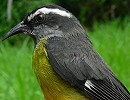 |
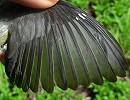 |
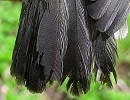
|
SY - U
Grayish above and yellowish below; sexes identical |
|
|
|
|
Ageing and sexing details:
|
SPRING: ASY-U (after-second-year, sex unknown) |
Adults of both sexes are blackish above and bright yellow below, with a distinct white supercilium.
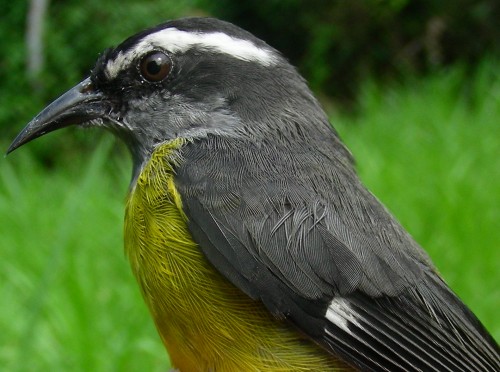
Photo by Marcel Gahbauer, Las Caletas (CR),
April 2008
Adults have uniformly blackish wings, with white patches visible on the outer primaries.
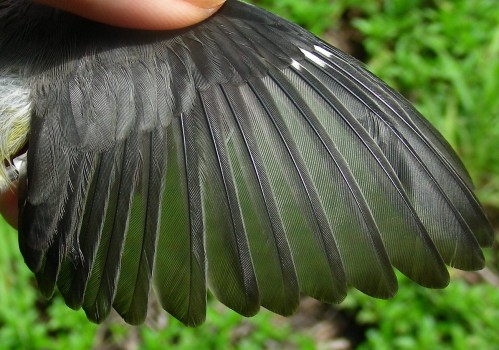
Photo by Marcel Gahbauer, Las Caletas (CR),
April 2008
Adults have black rectrices; more study is needed to determine whether the shape of rectrices differs consistently between SY and ASY Bananaquits.
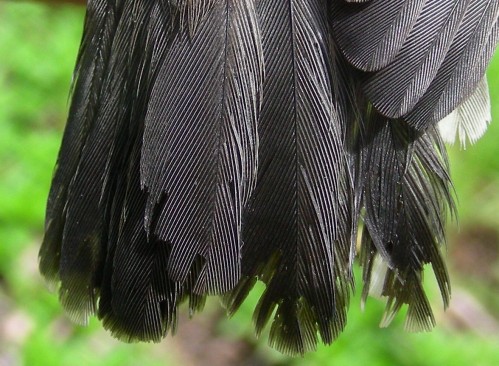
Photo by Marcel Gahbauer, Las Caletas (CR),
April 2008
RETURN TO AGE/SEX
OVERVIEW
|
SPRING: SY-U (second-year, sex unknown) |
Immature Bananaquits are much paler than adults, grayish-green above and yellowish below, with only a faint pale supercilium. Bananaquits have an unusually long breeding season, raising up to several broods per year. Given that the individual below still retains a juvenile gape, it may actually be a hatch-year bird from a winter or early spring nesting, or else a young bird hatched very late in the previous year.
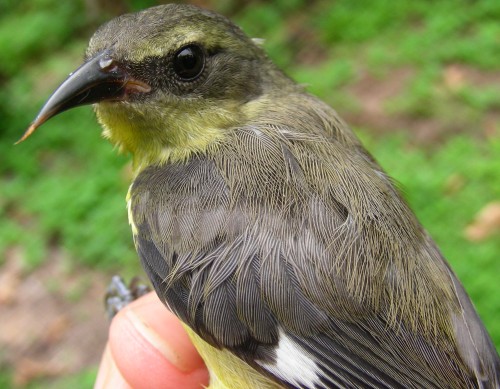
Photo by Marcel Gahbauer, Las Caletas (CR),
April 2008
The wing pattern is similar on Bananaquits regardless of age, but the HY/SY wing is not as dark.
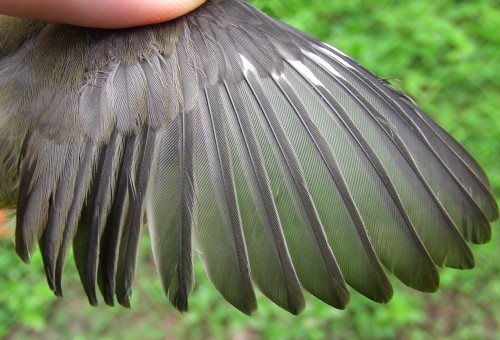
Photo by Marcel Gahbauer, Las Caletas (CR),
April 2008
RETURN TO AGE/SEX
OVERVIEW
|